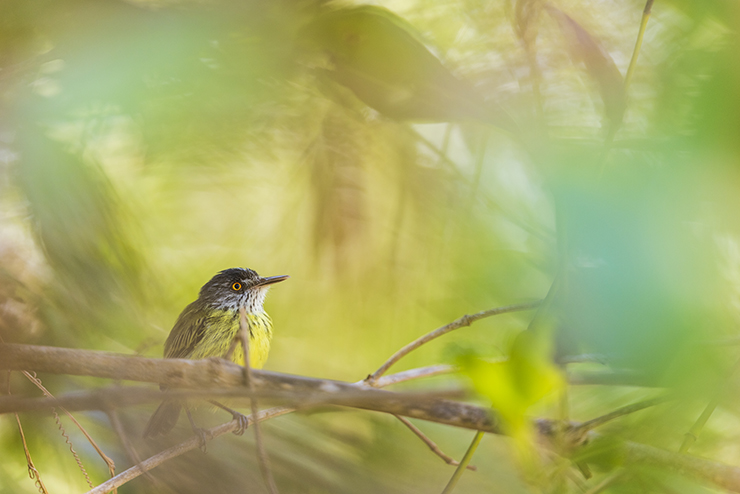
Our first full day in the Land of Many Waters predictably began with a trip on one of these many waters. After leaving our hotel in the dark, we arrived at the small dock about half hour after sunrise – making one of many salient points about birding in Guyana: the country is vast! Nevertheless, the light was still gentle and golden. Farmhouses dotted the landscape, but our attention was directed to the water.
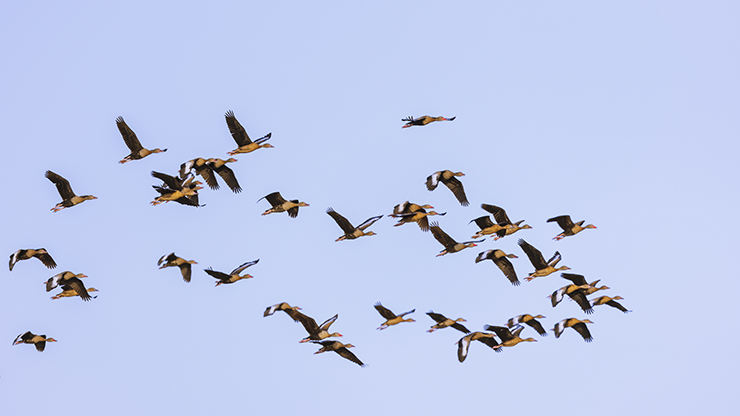
If there was any doubt we were near to water, this flock of Black-bellied Whistling Ducks made it absolutely clear.
Here, we met up with a good friend and talented local photographer who would join us for the morning’s session and host us at his place for the afternoon. He chuckled as I jerked into action at some passing Brown-throated Parakeets, indicating that we’d see lots more. And so we did, but every subsequent sighting was of birds blitzing past.
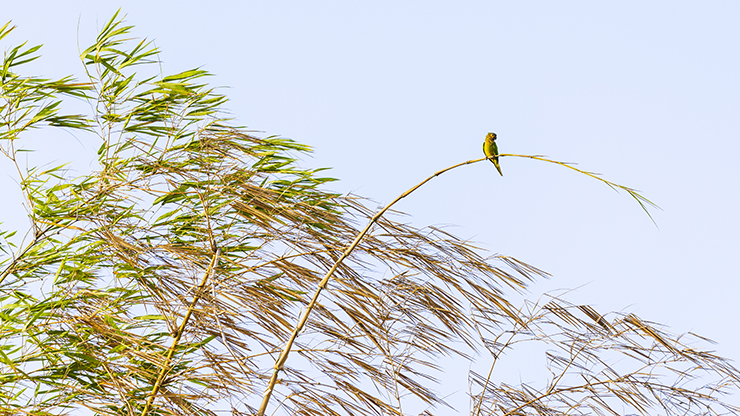
Brown-throated Parakeet, my only sighting of a perched bird for the trip.
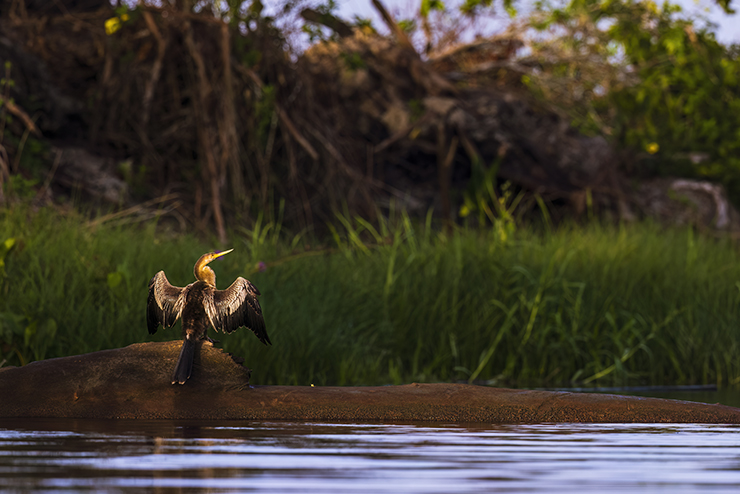
Can’t get on a boat in the Neotropics and not see an Anhinga.
The main target as we drifted downriver was the enigmatic and prehistoric Hoatzin – national bird of Guyana and an absolute treat for the eyes. These birds hatch with claws on their wings and never really stop looking like present-day dinosaurs. To learn more about this bird you can check this link, prepared by my good friend of many years whom I finally had the pleasure of meeting in person this morning.
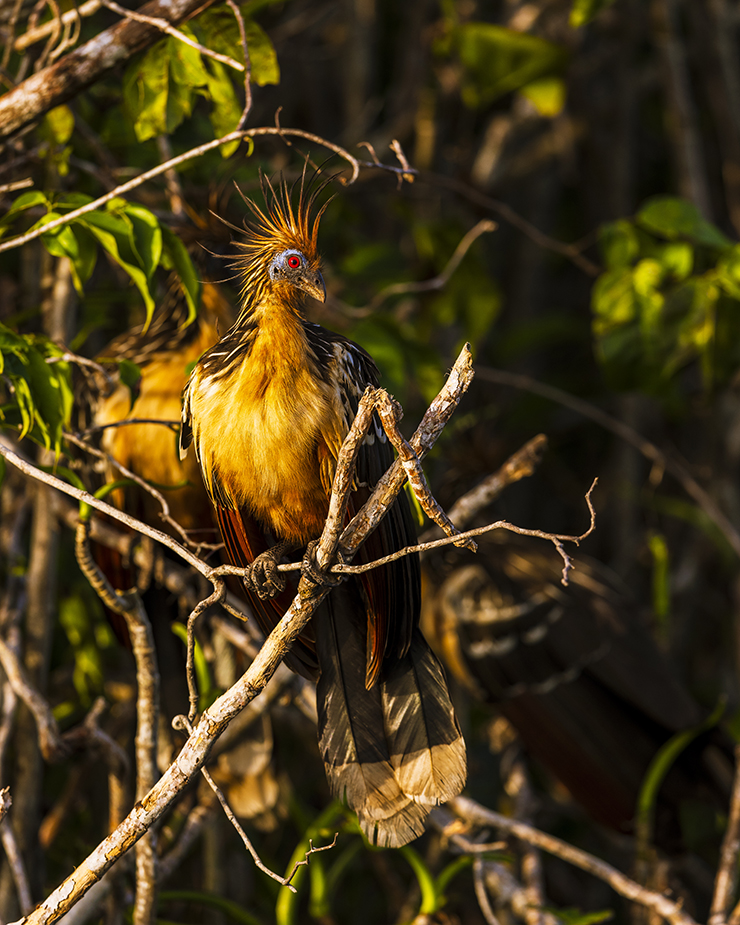
Hoatzin
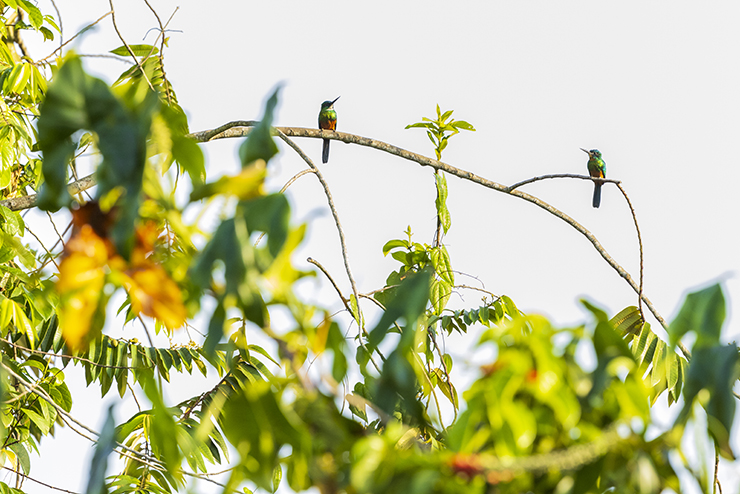
A pair of Green-tailed Jacamars looked on as we ogled the Hoatzins, probably puzzled why we were suddenly enraptured by brown birds and not dazzlingly iridescent ones.
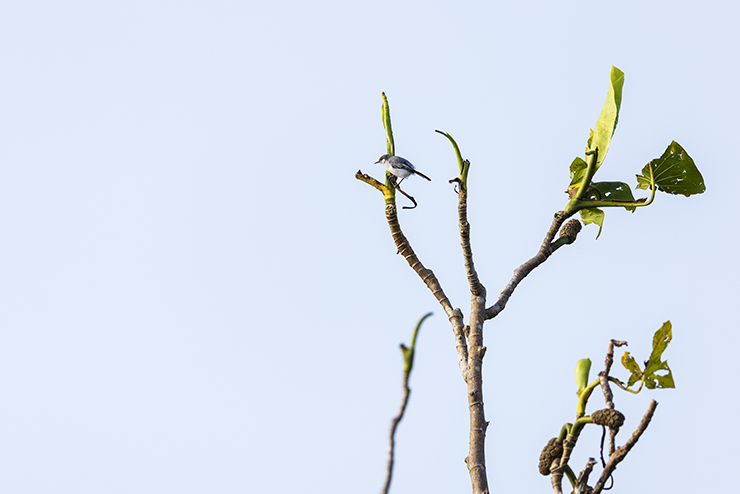
Further downriver, a tiny bird flitted on an open branch. It was my first ever gnatcatcher – Tropical Gnatcatcher.
Within the dense vegetation bordering the river, there was a consistent soundtrack; in fact it was a soundtrack that was very familiar to me. Silvered Antbird has been one of my bogey birds here in Trinidad for many years, from sightings when I did not have camera in hand to having camera in hand, ready to go but being on opposite sides of a large tree trunk.
Numerous Silvered Antbirds were calling from within the tangles, but despite feeling like they came to within arm’s reach, the Guyanese birds were just as skilled as their Trinidadian counterparts in remaining hidden.
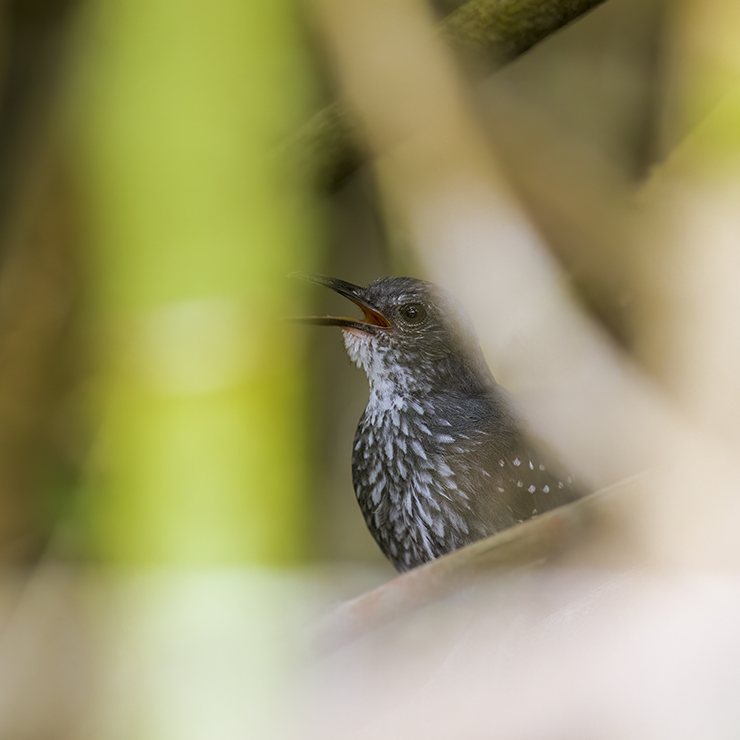
Fortunately, I eventually found a window and caught this male Silvered Antbird as it belted its song.
When seeking birds in dense vegetation, one becomes extremely tuned in to movement. While the antbirds were closer to the ground, I was momentarily distracted by something flitting around a little higher. It was a wren, clearly, exhibiting typical wren behaviour by only giving me a single opportunity. When I showed it to our guide, he indicated that it was not a commonly seen species.
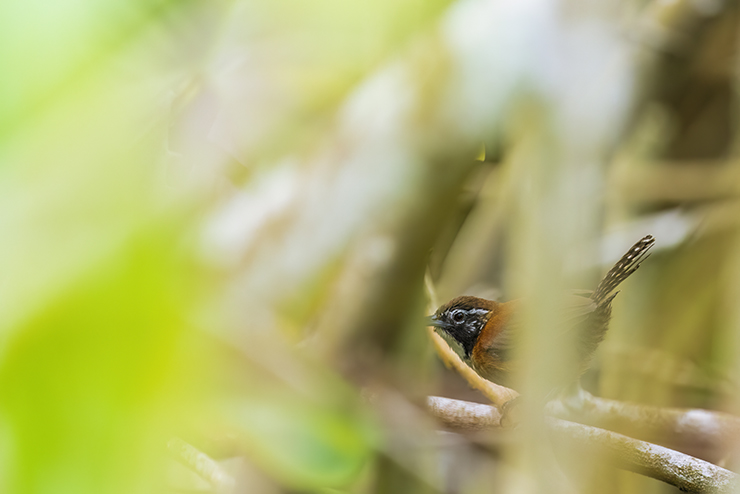
Coraya Wren, courtesy the single shot special. Truth is, I did get a second photo because of the high frame rate, but the wren was already on its way to better, brighter places by then.
After getting off our boat, we decided to explore some nearby fields to see if we catch get any glimpse of a recently sighted Grey-breasted Crake.
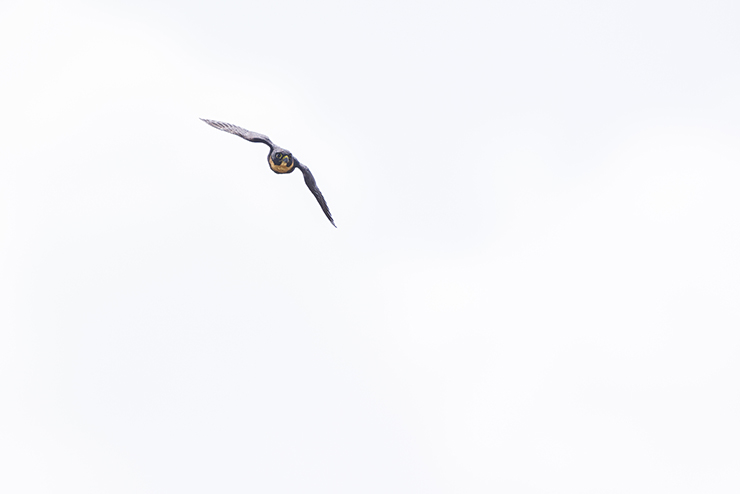
Although the crake was a no-show (surprise, surprise), a Bat Falcon whizzed past.
On our way out, we saw several Great Black Hawks patrolling the pastures. This was the closest of the lot, look closely and you’ll see some blood on its bill – evidence of it having just swallowed a snake. A horde of Carib Grackles surrounded this bird, they presumably comprised an attentive audience while the predator-prey drama unfolded.
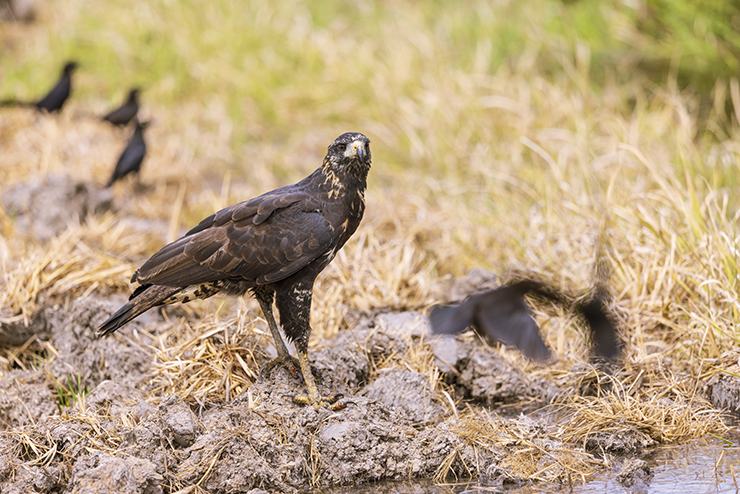
Great Black Hawk
A short while later, we made a quick stop under the searing midday sun at the famed seawall. Coastal Georgetown near the mouth of the mighty Demerara River is approximately six feet below sea level, so the seawall is a necessary feature. It felt strange to climb to see the ocean!
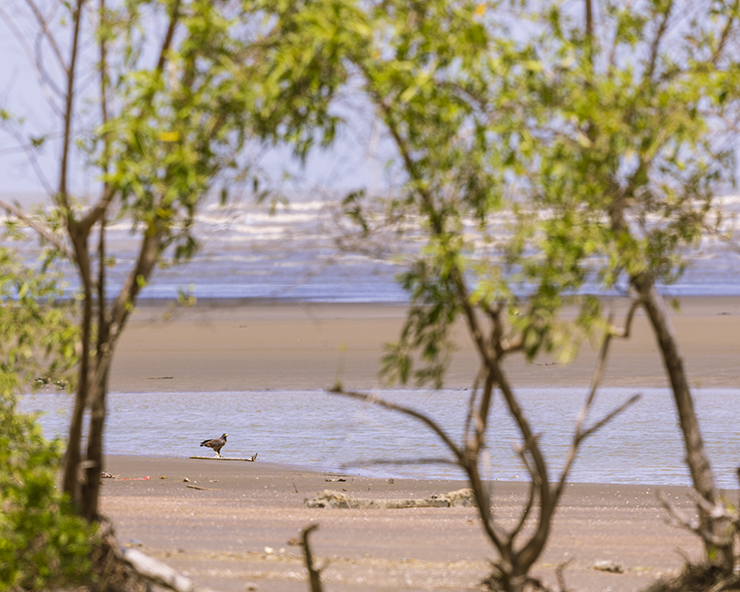
This Rufous Crab Hawk was also feeling the heat, drinking water from one of the many streams flowing into the Atlantic.
Within the coastal vegetation we got another look at White-bellied Piculet (albeit not half as good as the view from the previous afternoon) and familiar flycatchers Brown-crested Flycatcher and Spotted Tody-Flycatcher.

Spotted Tody-Flycatcher
From here, we grabbed lunch and drove a short distance to our friend’s farm – but I believe that adventure deserves its own post. Stay tuned!






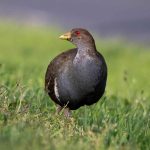
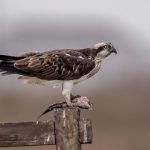





The Hoatzin is very high on my list of birds I want to see, and you got a great photo of it!
Did you have a chance to go inland? Karasabai, at the border with Brazil, for the Sun Parakeet, is a fun excursion.
Maybe it’s good that you went now, however, since Venezuela just voted to annex 2/3 Guyana’s territory 😉